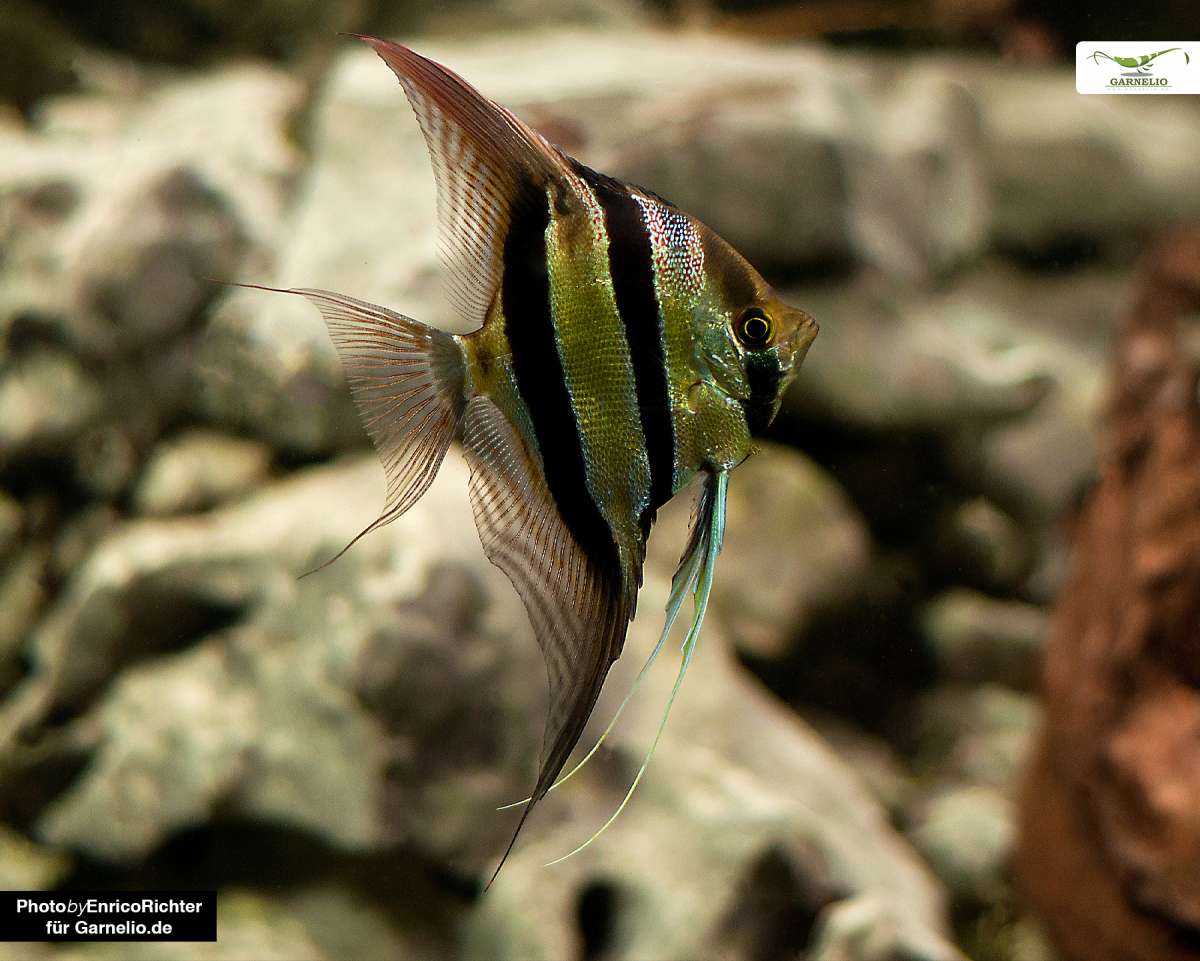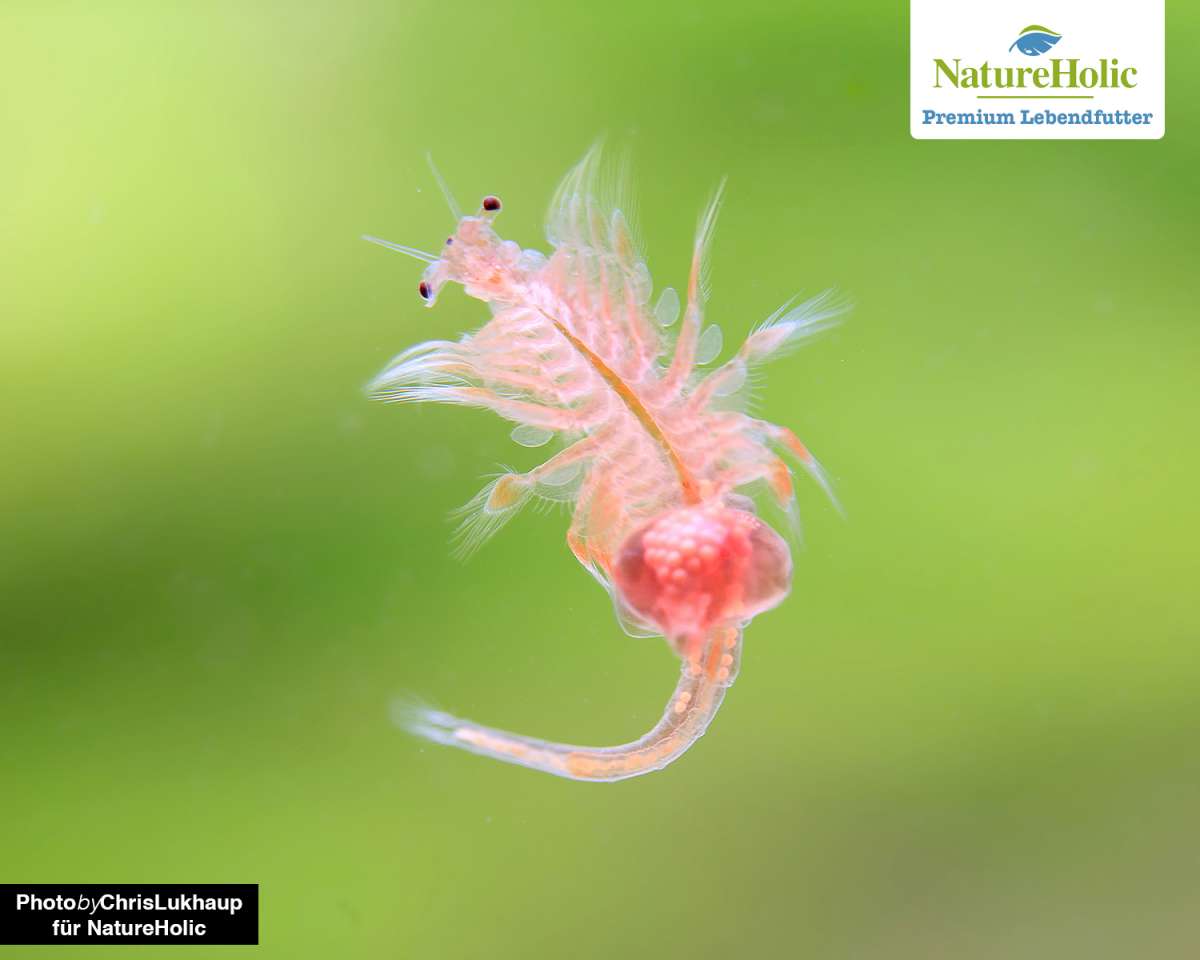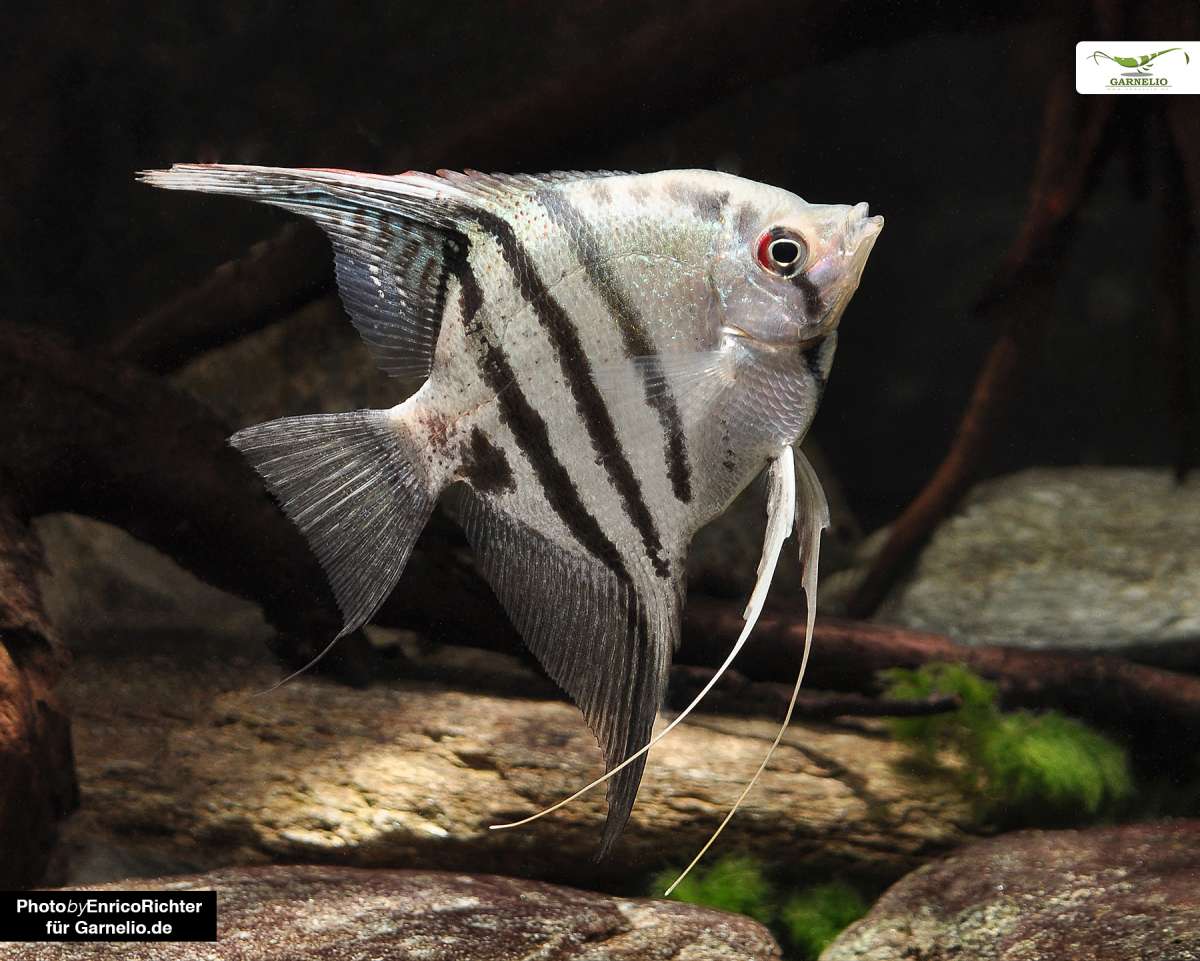Angelfish in the aquarium
Table of contents
- Where do angelfish come from?
- How are angelfish kept?
- Which companion fish are suitable?
- What do angelfish eat?
- Breeding angelfish - is it possible?
They are among the most popular ornamental fish of all and are evergreens of aquaristics. Angelfish, as they are also called, fascinate with their arrow-like appearance, which is one of the reasons for their name, and surely one or two people who have ever seen them have already considered buying them.
Where do angelfish come from?
Like some of the most popular ornamental fish, angelfish originate from South America. They belong to the cichlids and can be distinguished between the Leopold's sailfin and the high sailfin, which reach different sizes. They were first described in their habitat, the Amazon, as early as 1823. Here they are found both in the Amazon itself and in its numerous tributaries such as the Rio Madeira, Rio Negro and the Rio Ucayali.
Their habitat tends to be shadier and belongs to the floodplains. Angelfish mainly stay in the quiet and overgrown shore zones. A similar infrastructure should also be provided in the aquarium so that your animals feel comfortable.
Angelfish are now bred in a number of attractive colours that are highly sought after and can therefore be shimmering gold, marbled, silver or even red, blue, purple or spotted. What they all have in common is the high arrow-shaped body with the long "sail fins", and they can reach up to 26 cm in height, which is why it is better to keep them in a higher aquarium so that they do not bump their fins, as they are sensitive in this respect.

How are angelfish kept?
Angelfish, like most ornamental fish, have an affinity for groups. It is therefore advisable to keep them in groups of at least 5, from which harmonising pairs will later emerge. Until this happens, however, the shoal swims more or less loosely together. A so-called blackwater aquarium is particularly advantageous for angelfish. You can use sand or fine gravel as substrate and use Amazon sword plants, vallisnerias and cryptocorynes to create dense stands in places. It is best to place the plants at the edge and in the background so that they still have enough free swimming space.
Root structures and stone structures that prevent them from falling over also provide a good infrastructure that offers the animals visual protection and territorial marking, as they can become a little more "perchy" from time to time. Their requirements regarding water values are somewhat more demanding with angelfish, regular temperature-controlled water changes and good hygiene are obligatory. They tolerate a total hardness between 3 and 15 °dGH, a pH value between 6 and 7.5. To support their well-being, enrichment with humic substances in the form of alder cones, peat products or sea almond leaves is recommended.

Which accompanying fish are suitable?
Angelfish are also ideal for a community aquarium if you don't have too many breeding ambitions. Corydoras, loricariids and larger South American tetras are particularly suitable. Less suitable, however, are fin-biting fish such as Red of Rio or Blood Tetras, as these can severely injure the angelfish's long pectoral fins. Finsuckers are not suitable either, because they may suck on the large body surface of the angelfish. Snails, such as the anthracite limpet or racing snails, are usually not bothered by the angelfish and fit perfectly into its aquarium. Shrimps, however, live rather dangerously and are often regarded as a snack.

What do angelfish eat?
To keep your angelfish healthy and develop beautiful colours, you should not make any major compromises when it comes to food. Make sure that your carnivores are fed a varied and species-appropriate diet so that they do not develop deformities. You can spoil them with an ornamental fish food designed for their needs, consisting of flakes, granules or slow-sinking dry food, and regularly upgrade this menu with impeccable frozen and live food. Mosquito larvae, artemia, but also daphnia or water fleas are quite suitable for this.

Breeding angelfish - is that possible?
As the external sex differentiation is quite complex, angelfish should be kept in groups. After a while harmonising pairs will form, until then the swarm swims together more or less in loose groups. They become sexually mature at about 6 months and are fully grown at 2 years.
The typical "bull's forehead" serves as a sexual characteristic in the male angelfish, but it happens that even females occasionally develop this. They indicate their readiness to mate by profusely preening a possible spawning substrate, which can be large leaves of aquatic plants such as Amazon swordfish, but also other smooth surfaces such as the top of stones. They lay their eggs in long rows, which are then fertilised by the male. Because breeding in a community aquarium is rather difficult due to potential spawn predators, angelfish should better be bred in a spawning and rearing aquarium. The parents defend their fry and also the young fish vehemently.
You can later feed the fry with infusoria and raise them with freshly hatched nauplii. Ensure very good water hygiene so that neither the clutch of eggs becomes fungal nor the larvae are harmed, which is why adding humic substances to the water is highly recommended.

Bildunterschriften wären toll
Wäre toll, wenn man auch Bildunterschriften verfassen würde. Dieser "Koi-Skalar albino" sieht mega interresant aus und da fehlt sogar der Ursprung des Bildes. Würde mich interessieren, ob man solche Tiere auch irgenwo im Aquarium bewundern kann oder sogar käuflich erwerben könnte.